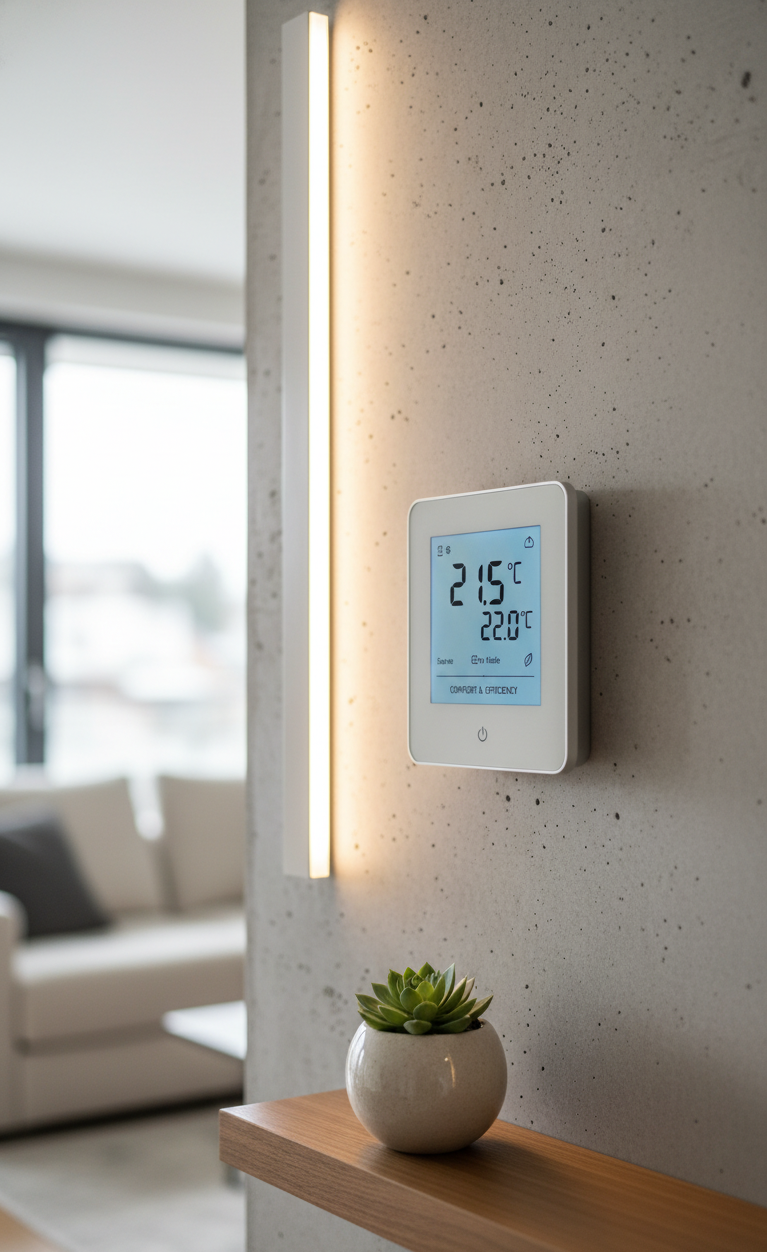
🌡️ Design Tip: Smart thermostats combine intuitive interfaces, learning algorithms, and connectivity features to create personalized climate control that adapts to your lifestyle while maximizing energy efficiency.
🏠 Introduction to Smart Thermostats
Smart thermostats represent the evolution of climate control technology, transforming how we manage indoor environments. These devices are characterized by their minimalist design with clean digital displays that show current and target temperatures. Unlike traditional thermostats, smart versions feature touch-sensitive interfaces, Wi-Fi connectivity, and advanced sensors that detect occupancy, humidity, and ambient light. Their sleek appearance allows them to blend seamlessly into modern home interiors while providing powerful functionality that goes far beyond simple temperature adjustment.
🔧 How Smart Thermostats Work
The genius of smart thermostats lies in their sophisticated combination of hardware and software. These devices continuously learn from your preferences and daily routines to create automated heating and cooling schedules. The process begins with installation, after which the thermostat connects to your home's Wi-Fi network, enabling remote control via smartphone apps. Advanced algorithms analyze usage patterns, weather forecasts, and even your home's thermal characteristics to optimize temperature settings for maximum comfort and efficiency.
Sensing Technology
- check_circle Temperature sensors with ±0.5°F accuracy
- check_circle Occupancy detection through motion sensors
Learning Algorithms
- check_circle Pattern recognition for daily routines
- check_circle Adaptive scheduling based on usage
🛠️ Technologies and Tools
Creating effective smart thermostats requires a combination of advanced technologies and specialized tools. From initial design to final implementation, engineers and designers employ a range of software and components to bring these intelligent devices to life.
Core Technologies
- check_circle IoT connectivity for remote access
- check_circle Machine learning for pattern recognition
Interface Design
- check_circle Touch-sensitive displays with intuitive controls
- check_circle Mobile apps for remote management
🏢 Practical Applications
Smart thermostats have found applications across various sectors, each leveraging the unique advantages of intelligent climate control. From residential comfort to commercial efficiency, these devices transform ordinary spaces into optimized environments.
- 🏠 Residential Homes: Personalized comfort schedules, energy savings of 10-23%, remote temperature control
- 🏢 Commercial Buildings: Zoned climate control, energy management systems, occupancy-based adjustments
- 🏨 Hospitality Industry: Guest room comfort optimization, energy conservation during vacancy periods
- 🏥 Healthcare Facilities: Precise temperature regulation for patient comfort and equipment protection
💡 Tips and Enhancements
- 🔲 Use geofencing to automatically adjust temperatures when you leave or return home
- 📊 Enable energy usage reports to identify patterns and opportunities for savings
- 🌡️ Set temperature ranges rather than fixed points for more efficient operation
- 📱 Integrate with other smart home devices for comprehensive automation
- 🔄 Regularly update firmware to ensure optimal performance and security
✨ Final Note: Smart thermostats represent the perfect fusion of form and function, offering intuitive control over your home's climate while maximizing energy efficiency. By combining sophisticated sensors, learning algorithms, and connectivity features, these devices create personalized comfort experiences that adapt to your lifestyle and contribute to a more sustainable future.

No comments: